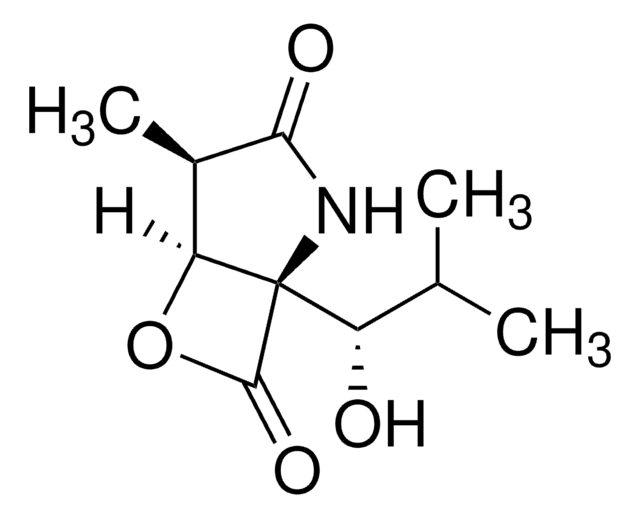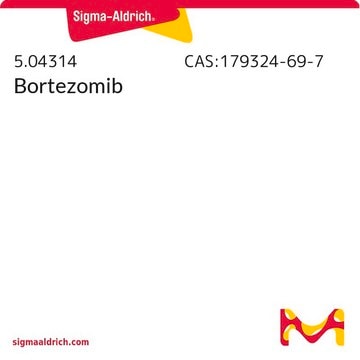208665
Chlorek kalmidazolium
A cell-permeable calmodulin antagonist.
Synonim(y):
Związek R 24571
About This Item
Polecane produkty
Poziom jakości
Próba
≥95% (HPLC)
Formularz
solid
producent / nazwa handlowa
Calbiochem®
warunki przechowywania
OK to freeze
kolor
white
rozpuszczalność
DMSO: 10 mg/mL
ethanol: 10 mg/mL
Warunki transportu
ambient
temp. przechowywania
−20°C
InChI
1S/C31H24Cl6N2O.Cl/c32-23-6-1-20(2-7-23)31(21-3-8-24(33)9-4-21)39-14-13-38(19-39)17-30(27-12-11-26(35)16-29(27)37)40-18-22-5-10-25(34)15-28(22)36;/h1-16,30-31H,17-19H2;
Klucz InChI
LBFGPQFQXRJXDI-UHFFFAOYSA-N
Opis ogólny
Działania biochem./fizjol.
brain calmodulin-dependent phosphodiesterase
Przestroga
Ostrzeżenie
Rekonstytucja
Inne uwagi
Nakazawa, K., et al. 1993. Br. J. Pharmacol. 109, 137.
Yuasa, T., and Muto, S. 1992. Arch. Biochem. Biophys.296, 175.
Ichikawa, M., et al. 1991. J. Membrane Biol.120, 211.
Silver, P.J., et al. 1989. Cardiovasc. Drug Ther. 3, 675.
Anderson, K.W., et al. 1984. J. Biol. Chem.259, 11487.
Gietzen, L., et al. 1982. Biochem. J. 207, 541.
Van Belle, H. 1981. Cell Calcium2, 483.
Levin, R.N., and Weiss, B. 1979. J. Pharmacol. Exp. Therap.208, 454.
Informacje prawne
Kod klasy składowania
11 - Combustible Solids
Klasa zagrożenia wodnego (WGK)
WGK 3
Temperatura zapłonu (°F)
Not applicable
Temperatura zapłonu (°C)
Not applicable
Certyfikaty analizy (CoA)
Poszukaj Certyfikaty analizy (CoA), wpisując numer partii/serii produktów. Numery serii i partii można znaleźć na etykiecie produktu po słowach „seria” lub „partia”.
Masz już ten produkt?
Dokumenty związane z niedawno zakupionymi produktami zostały zamieszczone w Bibliotece dokumentów.
Nasz zespół naukowców ma doświadczenie we wszystkich obszarach badań, w tym w naukach przyrodniczych, materiałoznawstwie, syntezie chemicznej, chromatografii, analityce i wielu innych dziedzinach.
Skontaktuj się z zespołem ds. pomocy technicznej








